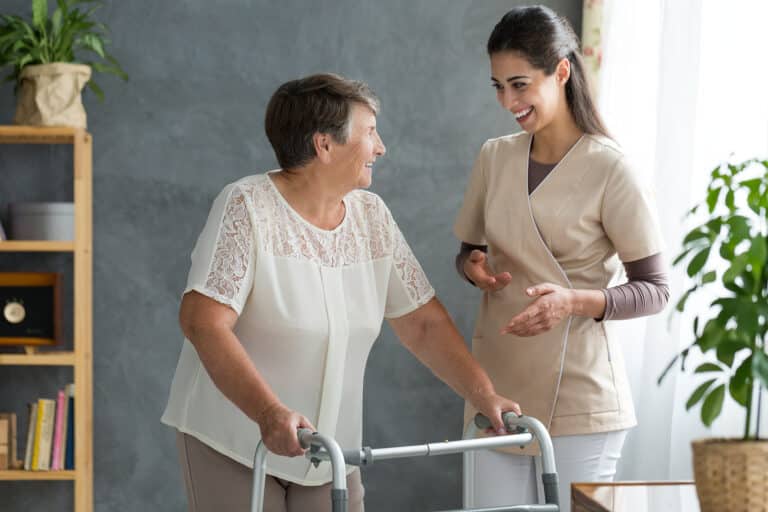In our last article, we emphasized the importance of effectively managing medications, which can significantly alleviate the symptoms of Parkinson’s disease like tremors, rigidity, and loss of movement. It’s truly remarkable how medications can provide such profound relief, offering encouragement to those living with this condition. However, thankfully, medication isn’t the only option for improving the quality of life for individuals with Parkinson’s. Exercise has been found to be incredibly beneficial, improving mobility, coordination, mood, constipation, and reducing stiffness, pain, and fatigue.
As research progress, there’s growing evidence that exercise may even slow the progression of Parkinson’s itself. According to Dr. Benzi Kluger from the University of Rochester Medical Centre, “The best evidence for slowing the progression of Parkinson’s is exercise.” So, just as taking medication is crucial and requires a prescription, perhaps exercise should also be prescribed to ensure individuals follow a proper personalized exercise regime. Let’s explore exercise together, including recommended types and, of course, the importance of staying safe throughout the process.
Staying Safe:
Before exploring some exercise options, it’s crucial to recognize that what may be safe for one person with Parkinson’s may not be suitable for all individuals with this condition. Consulting with your healthcare team (including your Neurologist, Physiotherapist, and Family Physician) BEFORE attempting any new exercises is essential for safety and effectiveness. Once you have your personalized exercise program established by your Physical Therapist, here are some general tips to help maintain your safety.
1. Ask and wait for help before you attempt a new exercise: Not only can having an exercise partner enhance safety, especially when trying new or challenging exercises, but they can provide you with additional motivation and support.
2. Start slow and gradually increase intensity: Begin with low intensity exercises and gradually increase intensity as strength and endurance improve. This approach helps reduce the risk of injury and allows the body to adapt gradually.
3. Consider supervised exercise programs: Participating in supervised exercise programs, such as Physical Therapy or group fitness classes specifically designed for individuals with Parkinson’s, can provide support and guidance from trained professionals.
4. Pay attention to body cues: Listen to your body and pay attention to any signs of discomfort or fatigue. It’s important to stop exercising if experiencing pain or dizziness and consult with a healthcare professional if necessary.
5. Stay hydrated and take breaks: Drink plenty of water before, during, and after exercise to stay hydrated, and take regular breaks as needed to rest and recover.
What’s recommended?
Parkinson’s Canada recommends a variety of exercises; however, they must be tailored to each individual’s specific needs. These exercises typically focus on improving flexibility, strength, balance, and coordination. Examples of recommended exercises include:
1. Aerobic Exercise: Activities such as walking, cycling, swimming, and dancing can improve cardiovascular health, endurance, and overall fitness levels.
2. Strength Training: Resistance exercises using weights, resistance bands, or bodyweight can help strengthen muscles, improve posture, and enhance mobility.
3. Balance and Stability Exercises: Balance-focused activities like standing on one leg, heel-to-toe walking, and tai chi can help reduce the risk of falls and improve stability.
4. Flexibility Exercises: Stretching exercises help maintain or improve flexibility, reducing stiffness and increasing range of motion.
As there is no exercise program that is right for every person with Parkinson’s, ensure that whatever exercise regime you’ve been cleared or chosen to do can be incorporated with activities you enjoy. If your Physical Therapist has cleared you for walks, start by using your walker and bring a friend along. Find a beautiful path that takes you through a park. By enjoying your experience, you’ll ensure continued progress and growth with your exercise regime. Just a taking your medication is a required discipline, so is engaging in your regular exercise routine. As we have just learned, maintaining your ‘prescribed’ exercise regime is just as crucial as staying consistent with your Parkinson’s medications. To reinforce this, let’s consider the words of Gammon Earhart, a PHD Physical Therapist from Washington University School of Medicine. He stated, “A study of more than 2,000 people living with Parkinson’s showed that those who were exercising for 150 minutes or more per week had better mobility, physical function, and cognitive performance compared to those who were not exercising. The people who were exercising regularly also experienced less disease progression over the course of a year.”
- Seeing Clearly: Glaucoma Awareness for Seniors - March 10, 2025
- The Sounds of Life: Hearing Aid Care for Seniors - March 3, 2025
- Save a Life Today!! ❤️ - February 18, 2025









